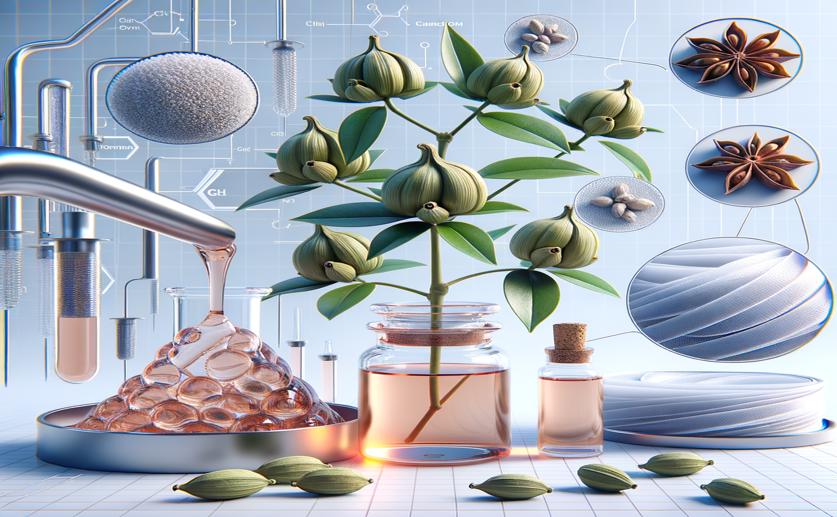
Silk and Plant-Based Gel Infused with Cardamom for Improved Medical Materials
Jim Crocker
19th June, 2024

Image Source: Natural Science News, 2024
Key Findings
- Researchers at Islamic Azad University developed a hybrid wound dressing combining natural and synthetic polymers
- The dressing includes silk fibroin and polyvinyl alcohol nanofibers, with a sodium alginate and gum tragacanth hydrogel containing cardamom extract
- The hybrid dressing showed excellent water retention, thermal stability, and controlled release of cardamom extract
- It demonstrated high biocompatibility, cell proliferation, and significant antibacterial activity against common wound bacteria
References
Main Study
1) A hybrid structure based on silk fibroin/PVA nanofibers and alginate/gum tragacanth hydrogel embedded with cardamom extract.
Published 18th June, 2024
https://doi.org/10.1038/s41598-024-63061-4
Related Studies
2) Next-Generation Diagnostic Wound Dressings for Diabetic Wounds.
3) Pullulan-Based Hydrogels in Wound Healing and Skin Tissue Engineering Applications: A Review.
4) Silk fibroin for skin injury repair: Where do things stand?



 27th January, 2024 | Jenn Hoskins
27th January, 2024 | Jenn Hoskins